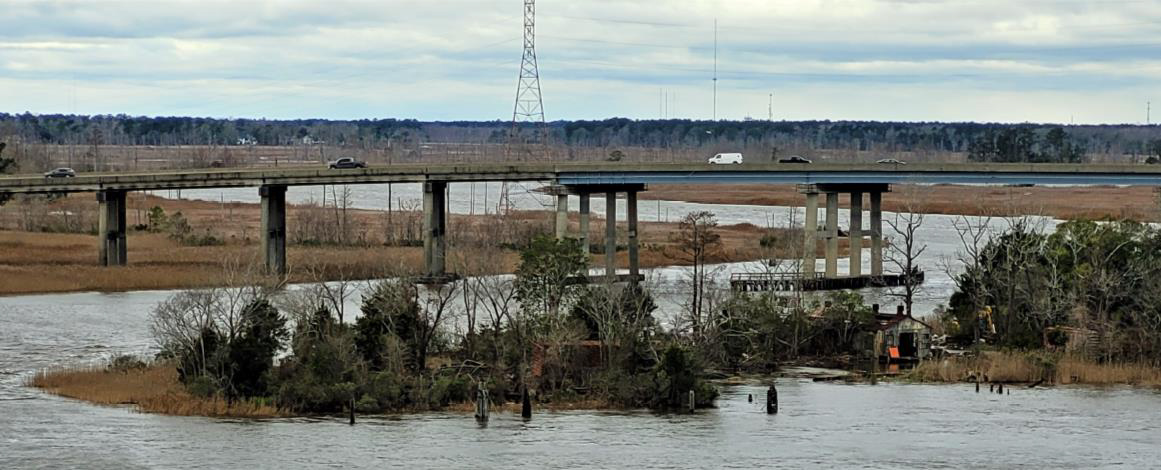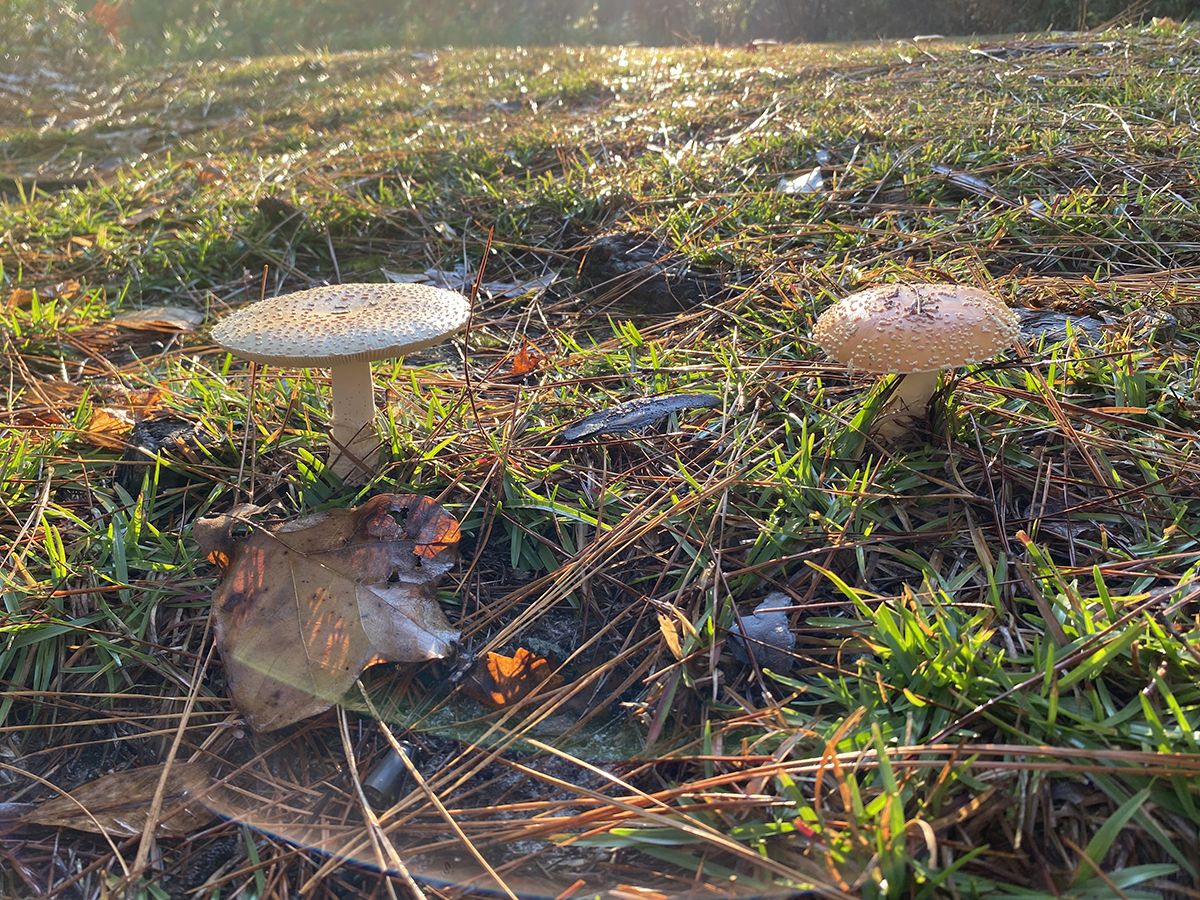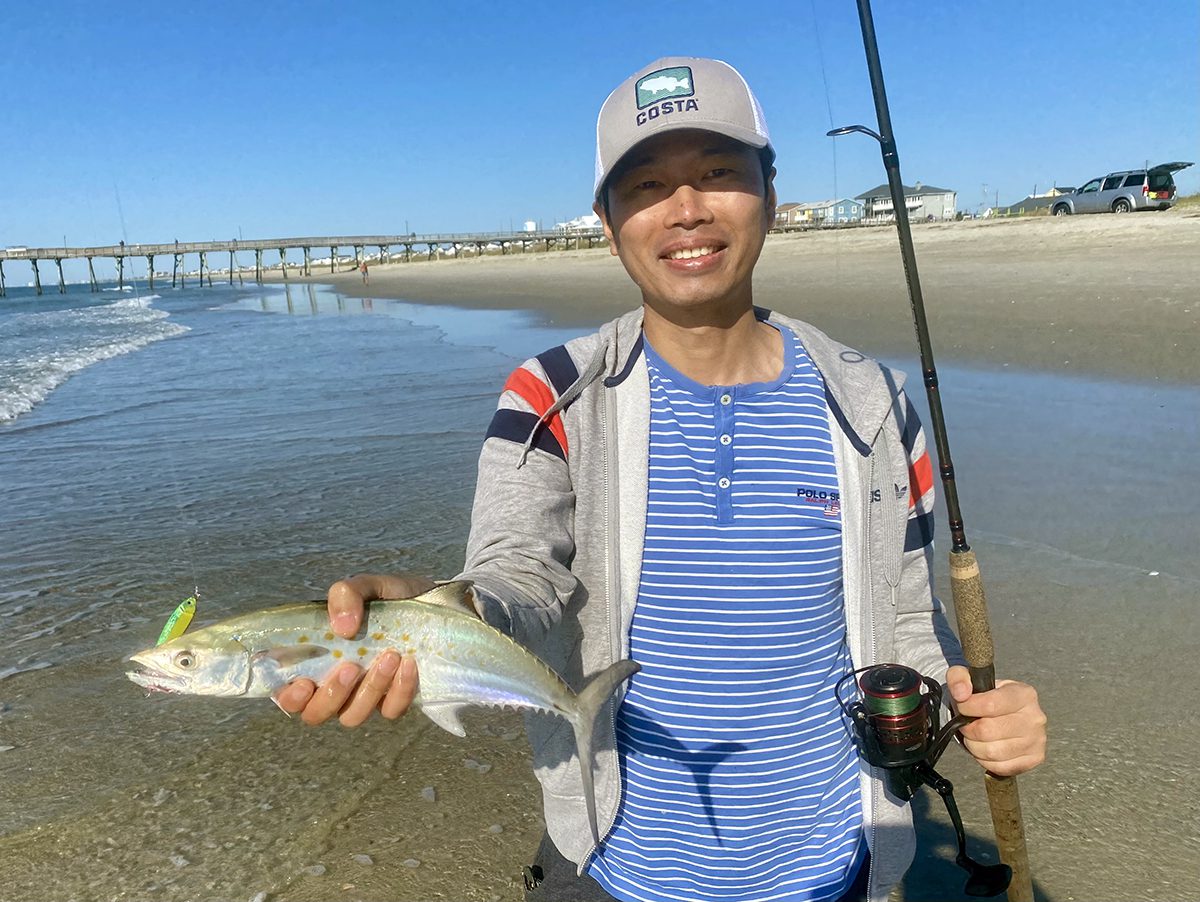
Stand on the beach on a nice summer day. Look out at the ocean. It’s what we do most of the time anyway.
See those boats cruising slowly parallel to the beach, anywhere from a hundred yards to as far out as you can see? Check if they have trolling lines out. I bet you they are trying to catch Spanish mackerel.
Supporter Spotlight
Hours and hours of effort are spent each year from April to October — along the North Carolina coast — in pursuit of the tasty, gold-spotted speedsters. Let’s take a look at when they are around and the myriad ways they can be pursued.
There are a lot of ways to do it, depending on the season and your preferred methods of fishing.
Sometime around Mother’s Day is when I usually expect the first big run of Spanish to make their appearance. A week either side is when you’ll see big schools rushing baitfish along the beaches, wrecks and rocks.
These fish are very aggressive, hungry and can be caught in a variety of ways. My favorite way is to cast to visibly feeding fish. A light spinning rod with a 2500-series spinning reel loaded with 15-pound test braided line will suffice. Cast a metal jig like a Stingsilver or Beach Bum that matches the size of the forage fish and retrieve at a high rate of speed.
Attach the jig to your main line with a bite leader of around a foot of 40-pound test fluorocarbon line. This will help keep them from stealing your lures and the fluorocarbon disappears in the water. The strikes will come fast and hard and it will feel like you’re snagged in the middle of the ocean. This is a great time to break out the fly rod you’ve been thinking about trying in saltwater.
Supporter Spotlight
Use an 8-weight rod loaded with a floating fly line attached to a 9-foot saltwater style 10-pound test leader with a 40-pound test fluorocarbon bite tippet. Any small, flashy minnow imitating streamer fly will get a bite.
These fish are on the move and eating everything.
Another easy way to pursue these early season fish is to simply troll a deep-diving swimming plug like a Yozuri DD around the visible feeding activity. No extra hardware is needed beyond a wire leader of about 12 inches long to protect against that impressive Spanish dental work.
If you are trolling and there are casters around, please be considerate and don’t troll right through the school of breaking fish. Trolling around the edge of the schools will still get you bites, and the fish will continue feeding on top.
The first spring run is impressive but the fish will be moving fast. One day, they will be like stars in the night sky; the next day, it will be over. They won’t have disappeared entirely but the huge abundance will be gone. Then they settle into the summer pattern.
Summer is a little less exciting. There won’t be the mass panic of huge schools coming north, but the fish are still there. You may have to cover more ground to find them but you can catch them. You can still cast to actively feeding fish when you find them, but they won’t be as prevalent.
Light tackle trolling with deep-diving plugs will still work, but having to cover so much more water necessitates a higher trolling speed that isn’t practical with light gear. This is when heavier trolling rods and planer boards will come out.
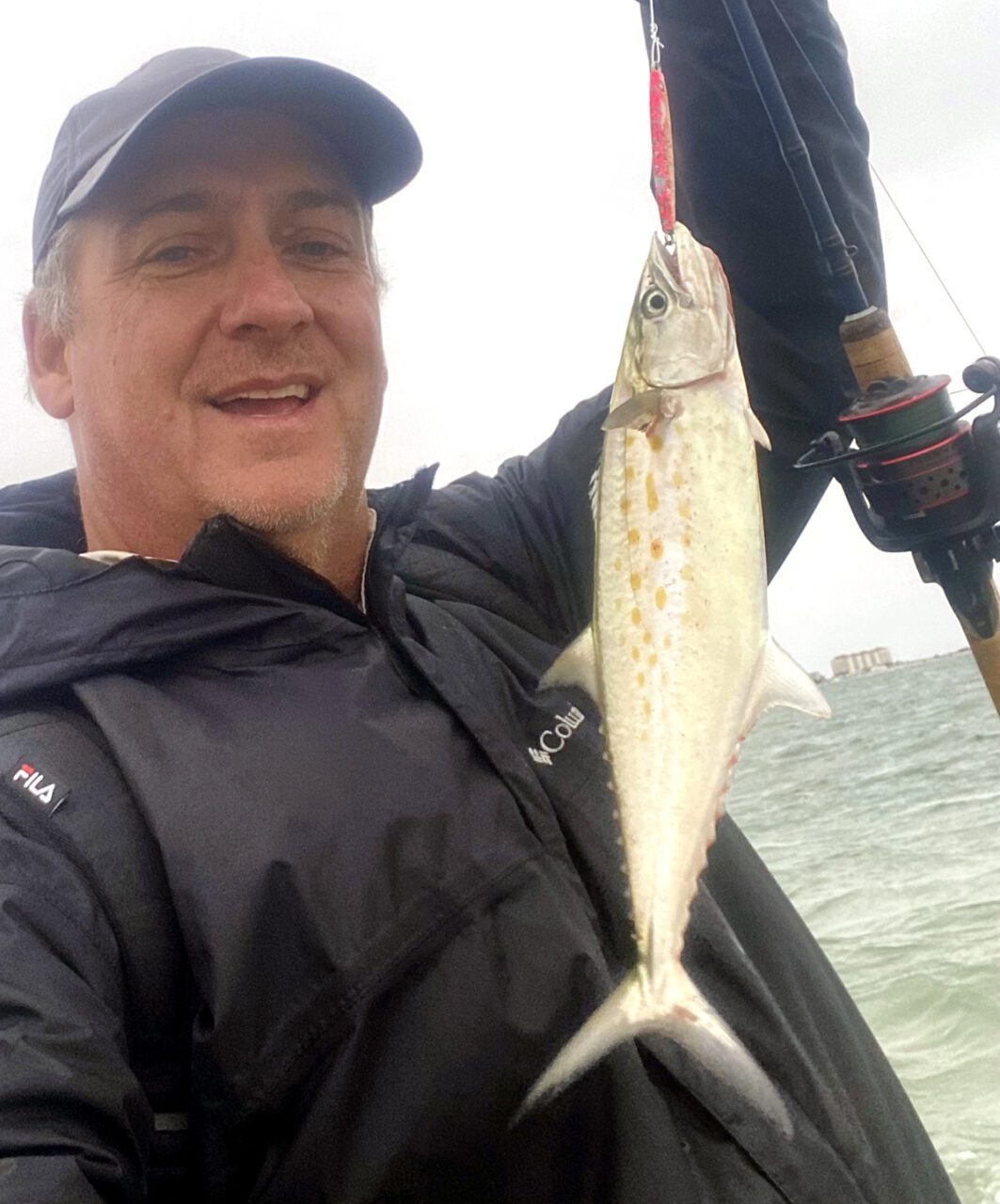
Attach a planer to 30-pound test monofilament. To the end of that tie about 10 to 15 feet of 20-pound test line with a short wire leader. Put a trolling lure like the venerable Clark Spoon out there. Troll at around 5 knots. You’ll have to handline the fish the last bit of the way to the boat after the planer board is brought to the rod.
This is an easy way to fish and a good way to fill a cooler in the summer months.
Something I really look forward to is the fall run of “macks.” They will come to the beaches in good numbers most years and surfcasters can have a blast. I prefer a fast-action rod, 8 to 9 feet long, and a 300-series reel with 15-pound test braided line. Make sure you have a bite leader. I use the 1-ounce casting spoons from Stingsilver or Beach Bum and with this set up I can cast them to the moon. Retrieve at a moderate to fast pace. The strikes will be stiff. This will start to happen at the end of September and into October. The biggest Spanish mackerel of the year seem to be caught around shoals and inlets right until around Columbus Day.
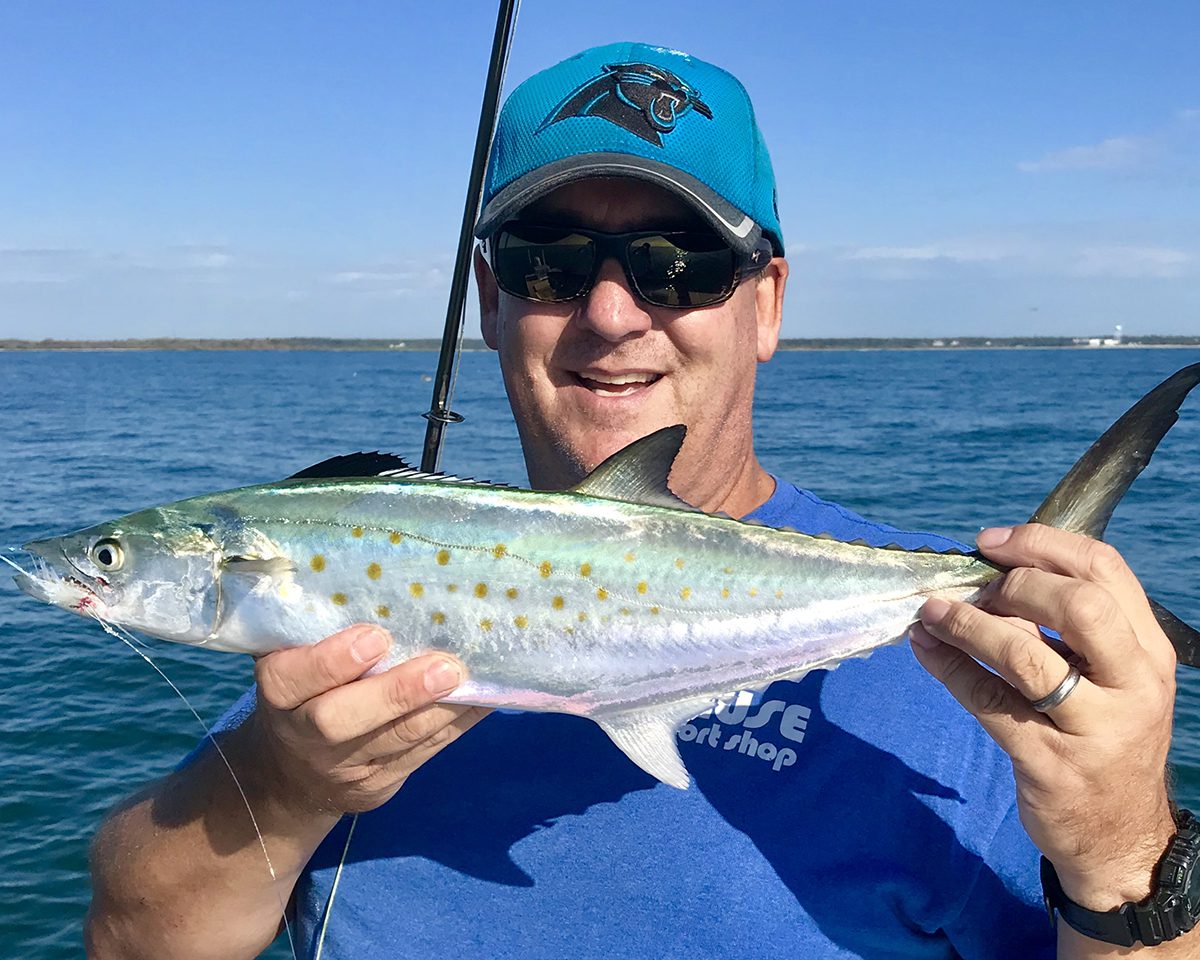
Finally, a word about preparation of these tasty speedsters.
Cut the dark strip of meat out of the middle of the fillets. Don’t fry them. Use dry preparation methods. Best is to broil or grill them. Use a fish basket and cook fillets over direct heat. Finish with lemon butter.
If you have a smoker these will go nicely. Try a dry brine with 1 cup of kosher salt, ½ cup of brown sugar, add spices like garlic, onion, paprika, pepper or whatever you like. Put the fillets on a pan and cover with 1/2 the salt mixture. Put in the refrigerator for at least an hour. Flip the fish pieces and cover with the rest of the salt. Let it sit again. You can leave it longer than an hour. I’ve done it overnight. Take the fish out and give a quick rinse with cold water to get all the salt off the outside of the meat. There should not be any visible salt left but be quick.
Now it has to dry completely. You can leave it overnight in the fridge.
Set your smoker for 160 degrees. After an hour, brush a 50-50 mixture of soy sauce and maple syrup. Then do it again after every 30 minutes. Smoke for two hours minimum but two and half is probably better. This is as close to candy as you can make from fish.
This also works with small bluefish, which can be caught in the exact ways and times as detailed above.
Spanish mackerel provide fun almost all season long. The fishing isn’t too difficult, and they provide a nice treat on the table too.




